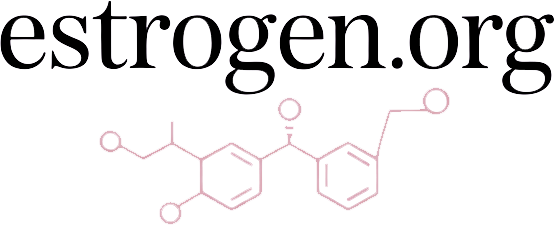What is Estrogen?
An introduction to the body's most influential — and often misunderstood — hormone.
What Is Estrogen?
Estrogen refers to a group of sex hormones responsible for regulating reproductive and other systems in the body. While commonly associated with women, estrogen plays important roles in people of all sexes.
As one of the main female sex hormones (along with progesterone), estrogen is central to the development of female secondary sexual characteristics. However, its influence extends far beyond reproduction, affecting everything from bone density to cardiovascular health and brain function.
Rather than a single hormone, "estrogen" encompasses a group of chemically similar hormones that include estradiol, estrone, and estriol — each with specific roles and dominance during different life stages.
Where Is Estrogen Produced?
Primary Sources
- Ovaries
The primary source of estrogen in women of reproductive age.
- Adrenal Glands
Produce small amounts in both men and women.
- Fat Tissue
Converts androgens to estrogen, especially important after menopause.
- Testes
In men, small amounts of estrogen are produced, mainly through conversion of testosterone.
Production Fluctuations
Estrogen levels are not static—they fluctuate throughout life and within shorter cycles:
- Menstrual Cycle
Rises during follicular phase, peaks at ovulation, then declines.
- Pregnancy
Dramatic increase, especially in estriol production.
- Menopause
Significant decline as ovarian production decreases.
What Does Estrogen Do?
Estrogen's influence extends far beyond reproduction, affecting virtually every system in the body.
Reproductive System
Regulates menstrual cycles, supports pregnancy, and develops female secondary sexual characteristics like breast development and widened hips.
Cardiovascular Health
Helps maintain healthy cholesterol levels and blood vessel flexibility, contributing to heart health and circulation.
Brain Function
Influences mood, memory, and cognitive function. Helps regulate body temperature and may protect against certain neurological conditions.
Bone Health
Maintains bone density by helping the body absorb calcium and preventing excessive bone breakdown. Critical for preventing osteoporosis.
Skin & Tissues
Maintains skin elasticity, promotes collagen production, and supports vaginal and urinary tract tissue health.
Metabolism
Affects how the body stores and uses fat, influences insulin sensitivity, and helps regulate body weight distribution.
Types of Estrogen
"Estrogen" actually refers to a group of related hormones that share a similar chemical structure but serve different roles in the body.
Estradiol (E2)
The most potent and abundant form of estrogen during reproductive years.
Reproductive age women, moderate amounts in men
Primary driver of female sexual development, fertility, and bone health
Estrone (E1)
A weaker form of estrogen that becomes proportionally more significant after menopause.
Post-menopausal women, also present in men
Secondary estrogen that can convert to estradiol when needed; plays a role in fat distribution
Estriol (E3)
The weakest of the three main estrogens, but produced in large quantities during pregnancy.
Pregnant women, minimal levels otherwise
Supports pregnancy, fetal development, and prepares the body for childbirth
Estrogen Levels Across Life Stages
From Puberty to Postmenopause
Puberty
Estrogen levels begin to increase, triggering the development of female secondary sexual characteristics.
Breast development, growth of pubic and underarm hair, widening of hips, onset of menstruation
Reproductive Years
Estrogen levels fluctuate predictably during the menstrual cycle, peaking just before ovulation.
Regular menstrual cycles, fertility, maintenance of feminine characteristics
Pregnancy
Estrogen (particularly estriol) increases dramatically during pregnancy.
Supports fetal development, prepares breasts for lactation, maintains the uterine lining
Perimenopause
Estrogen levels begin to fluctuate unpredictably as ovarian function becomes irregular.
Irregular periods, possible hot flashes, mood changes, sleep disturbances
Menopause
Estrogen production from the ovaries dramatically decreases.
Cessation of periods, hot flashes, vaginal dryness, possible mood changes
Post-Menopause
Low levels of estrogen are maintained primarily by conversion of androgens in fat tissue.
Increased risk of osteoporosis, heart disease, and urogenital atrophy
Men & Estrogen Across Lifespan
Men also experience hormonal changes with age, sometimes called "andropause." While testosterone is the primary hormone affected, estrogen levels also change. As men age, testosterone levels gradually decline while the proportion of estrogen may increase relatively, primarily due to increased body fat and continued conversion of testosterone to estrogen.
Why It Matters
Understanding estrogen's role in your body is essential for maintaining overall health and addressing symptoms that might arise from imbalances. Both too much and too little estrogen can affect your well-being.
Frequently Asked Questions
Common questions about estrogen and its effects on the body.
